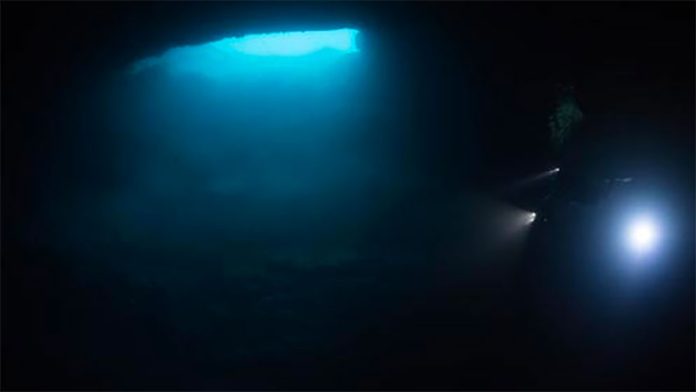An underwater photographer has found five fresh water cenotes, or natural sinkholes, in the depths of the Caribbean Sea off the coast of Quintana Roo.
The news agency EFE reported Saturday that Mexican photographer Rodrigo Friscione made the unprecedented discoveries while diving off the northeastern Quintana Roo coast between Isla Mujeres and Isla Contoy.
Cenotes are common on the Yucatán Peninsula but before Friscione’s discoveries none had been discovered beneath the surface of the sea.
EFE said that Friscione found one of the marine cenotes in 2016, another in 2017 and three in 2019. Friscione told the news agency that he went into a “hollow” while diving in 2016 and realized that it had no bottom.
“It was an infinite hollow,” he said, adding that the colder temperature of the water made him realize that he was diving in a mix of fresh water and salt water.
“There was … a change in the quality of the water, which speaks of a change in salinity. … Fresh water was coming out from the bottom of the sea,” Friscione said, describing his discovery as “extremely interesting.”
He subsequently found similar “hollows,” or cenotes, during subsequent diving expeditions.
“There is a great network of cenotes but nobody knows where the thousands and thousands of liters of fresh water come from. It has to come from somewhere because it’s flowing,” Friscione said.
The most likely hypothesis is that the five marine cenotes are connected to the vast subterranean network of water deposits on the Yucatán Peninsula.
It is possible that the limestone structures were dry caves thousands of years ago before becoming water-filled cenotes, said Guillermo de Anda, an underwater archaeologist currently working to obtain the necessary equipment to carry out a more extensive exploration of the first of the five cenotes discovered by Friscione.
De Anda, director of the Great Mayan Aquifer (GAM) project – in which archaeologists, biologists, underwater photographers and cave divers have explored, documented and mapped the Yucatán Peninsula’s extensive subterranean network of water deposits – has already recruited Robert Ballard, an American underwater archaeologist best known for the discovery of the wreck of the Titanic in 1985, to participate in the cenote project.
De Anda said that an autonomous underwater vehicle and a remotely operated underwater vehicle to which Ballard, a professor of oceanography at the University of Rhode Island, has access will make the exploration of the cenote easier and and less dangerous.
He said that Ballard, who was also involved in the discoveries of the wrecks of the German battleship Bismarck and the British ocean liner Lusitania, was excited about the prospect of working on the cenote exploration project and accepted his invitation to participate immediately.
Friscione will also be part of the team put together by de Anda, one of Mexico’s best known and most respected underwater archaeologists.
De Anda said the exploration was scheduled to go ahead this year but has been delayed due to the coronavirus pandemic. He added that he has approached the federal Environment Ministry and the National Council of Science and Technology for financial support but has not received a response.
“It’s an expensive project because the divers require a mixture of gases and we’ll most probably need rebreathers,” de Anda said, referring to the breathing apparatus that absorbs the carbon dioxide of a user’s exhaled breath to permit the recycling of the substantially unused oxygen content.
Rebreathers will allow divers to stay underwater longer and increase their safety while exploring the marine cenote, he explained.
News of the discovery of the five marine cenotes comes six weeks after a sinkhole that opened up on the highway between Playa del Carmen and Tulum exposed a large water-flooded cave with conduits that allow water from the Caribbean sea to flow into it.
Source: EFE (sp)
